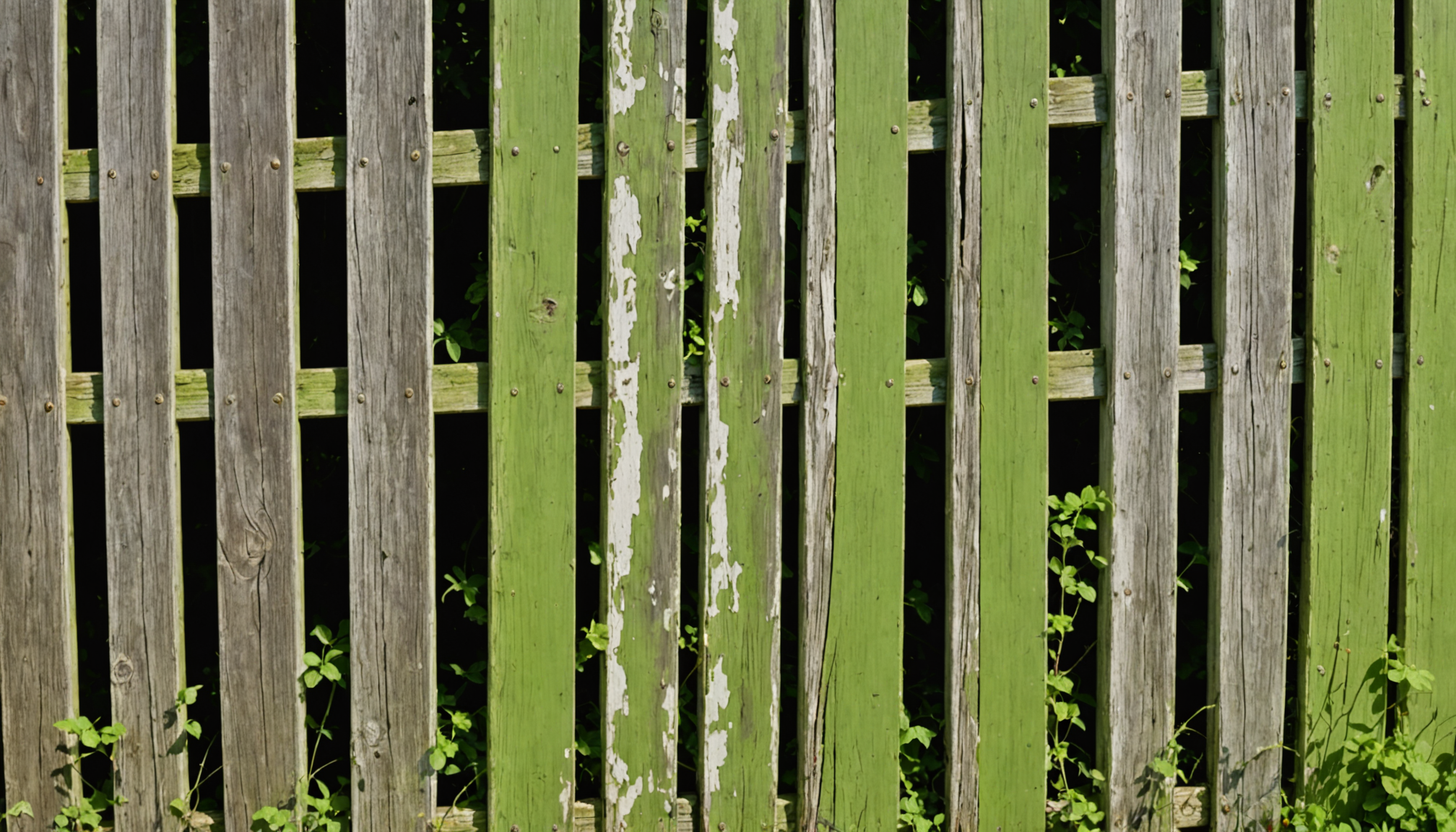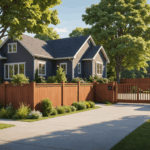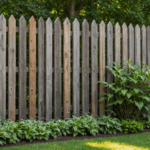Before embarking on a project to replace your fence, it is crucial to begin with a thorough assessment of your current structure. Evaluating the state of your existing fence can help you understand what repairs might be necessary and whether replacing the entire fence is the best option. Begin by conducting a visual inspection to identify any obvious issues such as broken panels, leaning posts, or visible signs of rot and decay.
You should also consider the functional safety aspects of your fence, particularly if it serves to enclose a yard for children or pets. Check for any gaps or areas where the fence is not adequately secured to prevent any potential escape or entry points. Additionally, if your current fence is electrified, inspect the electrical connections and wiring to ensure they are functioning correctly and comply with local safety regulations.
Another crucial element in assessing your fence is understanding its materials and resilience to various weather conditions. This knowledge can guide you in selecting durable materials that are better suited to your local climate and can withstand weather challenges such as high winds or excessive moisture. Pay close attention to joints and connections, as these are often the first points to suffer from wear and tear.
Also, reflect on whether the style and design of your current fence still meet your needs and aesthetic preferences. Fence design trends evolve over time, and your household’s priorities might have shifted since your last installation. Consider if increased privacy is a feature you now require, or if a more open design would better suit your landscape.
For a detailed evaluation, creating a comparison table can be especially helpful. Note down the pros and cons of your current fencing to guide your future choices and potential improvements.
| Current Fence Features | Pros | Cons |
| Material Type (e.g., wood) | Natural aesthetics, budget-friendly | Prone to rot and pest damage |
| Design (e.g., privacy vs. open) | Offers privacy and security | Can obstruct views, may require permits |
| Condition (e.g., wear & tear) | Still functional with minor repairs | Unsightly appearance, possible safety hazard |
| Height and Coverage | Excellent for containing pets | May require permissions for modifications |
| Safety Features (e.g., electrification) | Added security feature | Requires maintenance, potential legal issues |
By conducting this comprehensive assessment, you will gain a clear understanding of whether your existing fence can be salvaged with upgrades or if a complete replacement is necessary. This process ensures that your investment in a new fence aligns with both current needs and future aspirations.
choosing the right materials
Selecting the ideal materials for your new fence is a pivotal step in ensuring both functionality and aesthetic appeal. Choosing the right materials involves considering factors such as durability, maintenance requirements, cost, and how well the materials blend with your overall landscape. Here’s a step-by-step guide to help you make an informed decision:
1. Evaluate Climate Compatibility:
– Consider materials that can withstand the local climate conditions. For instance, if you live in an area with high humidity, opt for rot-resistant materials like vinyl or pressure-treated wood.
– In regions with extreme weather conditions, such as frequent high winds or heavy snowfall, sturdier options like metal or composite might offer better resilience.
2. Determine Your Priorities:
– Decide whether factors such as privacy, security, and aesthetics are your top priorities. For enhanced privacy, solid panel designs made from wood, vinyl, or composite are effective.
– If security is paramount, metal fencing like wrought iron or aluminum can provide a robust barrier while accommodating decorative styles.
3. Assess Maintenance Needs:
– Consider the ongoing maintenance required by different materials. Wood fences, while offering natural beauty, generally require regular sealing or painting to prevent decay and pest damage.
– Low-maintenance options like vinyl or metal only need occasional cleaning, making them ideal for those looking to minimize upkeep efforts.
4. Budget Considerations:
– Establish a budget that covers not only initial material costs but also installation and long-term maintenance expenses. Wood is often a cost-effective option initially, but might incur higher maintenance costs over time.
– Compare this with materials like vinyl, which may have a higher upfront cost but lower maintenance expenses.
5. Explore Design Preferences:
– Reflect on current trends and your personal taste. Cedar or redwood can offer a rustic and traditional look, while sleek metal designs align with modern aesthetics.
– If sustainability is a consideration, select eco-friendly materials like bamboo or recycled composite, which combine a contemporary look with environmental consciousness.
6. Check for Local Regulations:
– Before finalizing your material choice, check local building codes and regulations, as some areas have restrictions on fence heights or materials due to safety or aesthetic concerns.
– Ensure your selection meets any local HOA guidelines or neighborhood standards to avoid restrictions that might limit your options.
7. Consult with Experts:
– Reach out to local fencing contractors or home improvement professionals to explore the latest trends and receive advice tailored to your specific needs. They can provide insights on the latest innovations in fence materials that balance durability, looks, and cost.
By carefully considering these factors, you can choose materials that not only serve your immediate needs but also complement your property’s overall appearance while remaining within budget. When chosen wisely, your new fence will provide both function and beauty for years to come.
installing your new fence
Executing the task of putting up a new fence requires meticulous planning and efficient execution to ensure durability and optimal performance. To begin, you’ll want to ensure you have all the necessary tools and materials on hand to avoid delays during the installation process. Common tools include a post hole digger or an auger for setting the posts, a level for ensuring accuracy, a tape measure for precise measurements, and a saw if any adjustments to the fence panels are needed.
First, you’ll need to establish a clear boundary line by marking where each post will be positioned, creating a guide that ensures your fence doesn’t inadvertently encroach on neighboring properties. Use string and stakes to map out your layout, double-checking measurements to guarantee uniform spacing between posts. This step is essential not only for the symmetry of your fence but also for adhering to any local building codes or property regulations regarding fence placement.
Next, start with digging the holes where your fence posts will go. The depth and width of the holes should align with the type and height of your fence, commonly about a third of the post length is buried. This ensures stability, particularly in regions prone to high winds. Adding gravel at the bottom of each hole is an excellent way to aid in drainage and prevent wood rot for wooden posts.
After ensuring that each hole is the appropriate depth, set the posts in the ground and use concrete to secure them. It’s crucial to check the alignment and verticality of each post before the concrete sets. Use a level frequently to verify they are straight. For those interested in electrical features, integrating electrified components at this stage ensures wires and connections are safely installed under the supervision of a licensed electrician, aligning with local safety codes.
Once the posts are secured and the concrete is dry, typically after 24 to 48 hours, it is time to attach the fence panels or rails. Ensure that they are level and securely fastened with the appropriate hardware. Adjustments might be necessary for varying terrain, so be prepared to cut panels or rails accordingly to match the contour of the ground.
Remember to implement any design elements that enhance both privacy and aesthetics during this phase. Decorative post caps, lattice features, or plants can be added in tandem to boost the visual appeal, in line with design trends that favor integrating natural aesthetics with practical functionalities.
In conclusion, patience and precision are key when it comes to installing your new fence. Throughout the process, prioritize safety by using the correct tools and protective gear, and always adhere to the recommended installation techniques for your specific materials. This attention to detail not only guarantees structural integrity but also maximizes the longevity and aesthetic value of your new fence, seamlessly blending function with modern design trends.
enhancing privacy and aesthetics
When considering ways to make the most out of your newly installed fence, enhancing privacy and aesthetics can transform it from simply a boundary into an integral part of your landscape. One straightforward method to improve privacy is by opting for taller fence panels or incorporating lattice tops. This allows you to create a secluded haven while adding a touch of architectural elegance. For a classic yet functional twist, you can even integrate trellises along the fence line, encouraging vines and climbing plants to grow and create a natural, living barrier.
Moreover, color can play a significant role in making a fence stand out or blend harmoniously with its surroundings. Consider painting or staining the fence in colors that echo nature, such as earth tones or soft greens, to seamlessly integrate with your garden. This approach not only enhances aesthetic appeal but also offers an added layer of protection against the elements, extending the life of your fence.
Lighting is another aspect worth exploring, providing both aesthetic charm and safety. String lights or solar-powered fixtures installed along the top of the fence can offer a warm and inviting ambiance in the evening. For a more sophisticated look, consider installing low-voltage directional lights to highlight certain sections or decorative elements of your fence. These lighting solutions not only contribute to the overall aesthetics but also improve safety by illuminating pathways and deterring potential intruders.
Incorporating artistic elements can infuse personality and flair to an otherwise functional structure. Explore trends like adding decorative panels with intricate laser-cut designs or mixed-material sections that use a combination of wood and metal. This eclectic mix can break the monotony and serve as a focal point in your garden or backyard.
Finally, don’t forget to explore the strategic use of landscaping to enhance fence aesthetics. Planting shrubs or installing flower beds at the base of your fence can soften its appearance and add a splash of color, which changes with the seasons. If space allows, consider including a small garden space between your fence and any outdoor seating areas. This not only beautifies the area but can also improve privacy by creating an additional barrier with taller plants or shrubs.
By thoughtfully enhancing privacy and aesthetics, you create a dynamic and versatile fence that not only meets functional needs but offers an expressive addition to your outdoor space. With current trends leaning towards personalization and integration with nature, your new fence can truly reflect your style and elevate the overall appeal of your property.
maintenance tips and cost considerations
Proper upkeep of your new fence is pivotal to ensuring its long-term durability and aesthetic appeal. One of the primary tasks is regular inspections to assess the condition of the fence. This allows you to identify minor issues before they escalate into significant problems. Look for signs of wear such as rust on metal components, loose panels, or signs of rot in wooden fences. Since exposure to the elements can cause deterioration, implementing a maintenance schedule is a prudent strategy.
For wooden fences, staining or sealing every couple of years can prevent moisture absorption and ward off pest damage. It’s essential to use high-quality weatherproofing sealants that reflect your region’s specific weather conditions, be it the salty air of coastal areas or the harsh, dry summer heat. For vinyl and composite fences, a simple routine of washing with soapy water and a gentle brush can help to maintain their cleanliness and freshness without causing damage.
Regarding metal fences, particularly wrought iron or aluminum, addressing rust is crucial. Protective coatings or rust-proof paint should be applied regularly, and any rust that does appear should be promptly sanded and treated to prevent it from spreading. This interval maintenance not only enhances the structural integrity of your fence but also its visual appeal, adhering to trends that emphasize blend and harmony between outdoor elements.
In terms of cost, being proactive with maintenance can save you significant outlays in the long run by extending the lifespan of your fence. Minor repairs, when undertaken promptly, often circumvent the need for more extensive—and expensive—replacements of major sections. It’s also beneficial to establish a contingency budget for unexpected repairs without drawing too much strain on your finances.
Furthermore, consider the seasonal care requirements that certain fences demand. For instance, winter protection is crucial in frost-prone areas to protect against ground heave, which can disrupt fence posts. Adding gravel and adjusting the landscape for better water runoff can mitigate these issues. Conversely, in hot climates, check for drying or cracking in wooden fences that may necessitate more frequent application of protective barriers.
Consulting with a fencing professional periodically can provide additional insights specific to your fence’s material and construction. They can advise on innovative trends in fence maintenance tools and products that are more environmentally friendly or technologically advanced, ensuring your fence not only stands tall against nature’s challenges but does so sustainably.
In conclusion, whether you’re simply dreaming of a fresh new enclosure or have taken on the monumental task of replacing an entire fence, following these guidelines will help you achieve a balance of style, privacy, and durability. Your efforts in assessing the old fence, choosing appropriate materials, diligently installing, enhancing aesthetics, and committing to thorough maintenance not only protect your investment but also enhance your property’s beauty and functionality for years to come. These thoughtful choices ensure your fence meets your needs and reflects your personal style, keeping pace with design trends and practical requirements alike.


